Makarasana, also known as the Crocodile Pose, is a restorative yoga posture that has profound physical, mental, and emotional benefits. This pose, known for its resemblance to a resting crocodile, is a powerful tool in yoga practice for promoting relaxation and relieving stress. In this comprehensive guide, we will explore the intricacies of Makarasana, including its history, benefits, how to perform it correctly, variations, contraindications, and its importance in modern yoga practice.
Understanding Makarasana
Makarasana, derived from the Sanskrit words “Makara” meaning crocodile, and “asana” meaning pose, is a simple yet deeply effective yoga posture. This pose is categorized as a restorative posture and is often practiced at the end of a yoga session or during moments when the body needs to relax and recuperate. Unlike many other yoga poses that require significant physical exertion, Makarasana is more focused on providing deep relaxation and allowing the body to release tension.
In Makarasana, the practitioner lies flat on their stomach with their arms stretched forward and their head resting on their crossed forearms. The legs are kept slightly apart, with the heels pointing inwards and the toes pointing outwards. This pose encourages a gentle arch in the lower back, promoting relaxation and ease in the muscles.
Historical Background of Makarasana
The origins of Makarasana can be traced back to ancient yogic practices, where it was often used as a preparatory pose or as a means of concluding a yoga session. The pose is believed to have been inspired by the calm and composed nature of a crocodile resting on the water’s surface. In yogic philosophy, the crocodile symbolizes strength, stability, and the ability to remain calm in challenging situations, making Makarasana a powerful tool for cultivating these qualities.
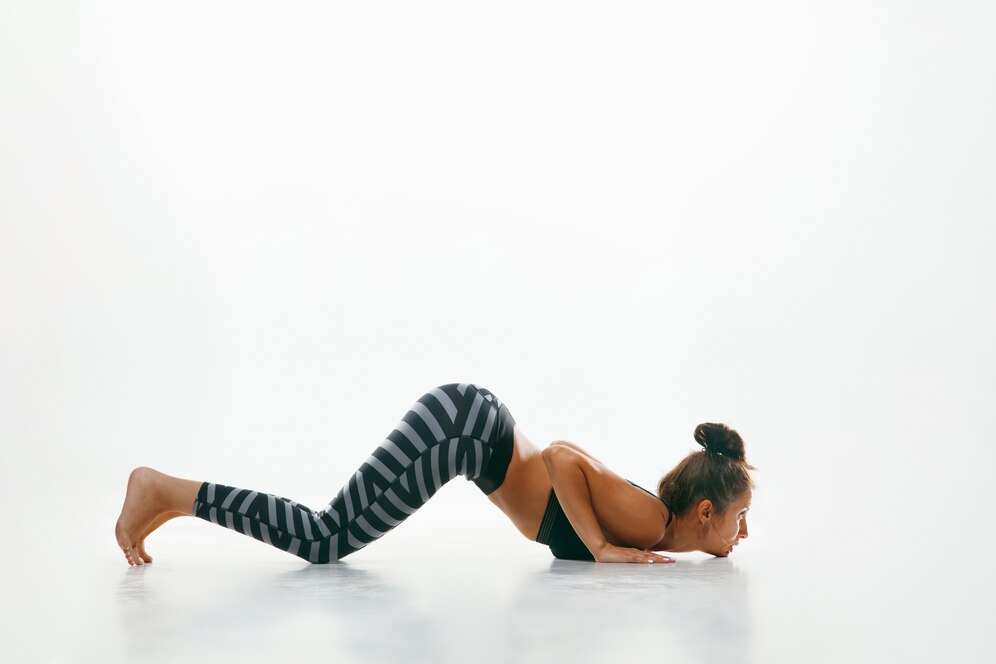
Ancient yogis recognized the importance of relaxation in achieving a balanced state of mind and body. Makarasana was thus incorporated into yoga practice as a way to provide the body with a moment of rest, allowing for the integration of the benefits gained from more strenuous postures. The pose has since evolved and is now widely practiced in various yoga traditions around the world.
The Physical Benefits of Makarasana
Makarasana offers a range of physical benefits that contribute to overall well-being. One of the primary benefits of this pose is its ability to relieve tension in the lower back. By gently arching the spine and allowing the muscles to relax, Makarasana helps alleviate discomfort and pain in the lower back, making it an ideal posture for individuals suffering from conditions such as sciatica or chronic back pain.
Another significant benefit of Makarasana is its ability to improve posture. The pose encourages the practitioner to align their spine correctly, which helps in developing a better posture over time. Additionally, Makarasana stretches the muscles of the chest and shoulders, helping to release any tightness or stiffness in these areas.
This pose also aids in improving respiratory function. By opening up the chest and allowing for deep, diaphragmatic breathing, Makarasana enhances lung capacity and oxygen intake. This is particularly beneficial for individuals with respiratory issues or those looking to improve their overall lung health.
The Mental and Emotional Benefits of Makarasana
While Makarasana is primarily known for its physical benefits, it also has a profound impact on mental and emotional well-being. One of the most significant mental benefits of Makarasana is its ability to reduce stress and anxiety. The pose encourages deep relaxation, which activates the parasympathetic nervous system, promoting a state of calm and tranquility. This makes Makarasana an effective tool for managing stress and anxiety in daily life.
Makarasana also helps in improving concentration and focus. By calming the mind and allowing the practitioner to connect with their breath, this pose enhances mental clarity and sharpens concentration. It provides a moment of stillness, allowing the mind to rest and rejuvenate, which is particularly beneficial for individuals who lead busy and stressful lives.
Emotionally, Makarasana can help in releasing pent-up emotions and tension. The pose encourages the practitioner to let go of any negative emotions or thoughts, creating space for positive energy to flow. This can lead to a greater sense of emotional balance and well-being.
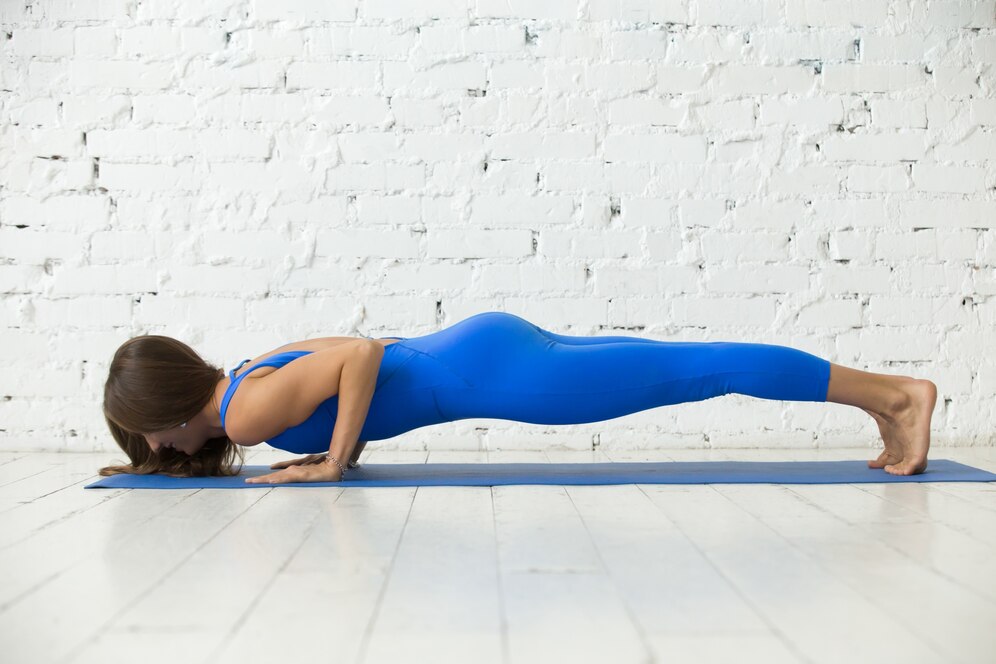
How to Perform Makarasana Correctly
To reap the full benefits of Makarasana, it is essential to perform the pose correctly. Here is a step-by-step guide to practicing Makarasana:
Step 1: Preparation
- Begin by lying flat on your stomach on a yoga mat. Ensure that your legs are slightly apart, with your heels pointing inwards and your toes pointing outwards.
Step 2: Positioning the Arms
- Stretch your arms forward, then cross them in front of you. Rest your forehead on your crossed forearms, allowing your neck and shoulders to relax completely.
Step 3: Engaging the Spine
- Allow your lower back to form a gentle arch by slightly lifting your chest off the mat. Ensure that the arch is comfortable and not strained. Your pelvis should remain grounded on the mat.
Step 4: Breathing
- Close your eyes and take deep, slow breaths. Focus on your breath and allow your body to sink deeper into the pose with each exhalation.
Step 5: Holding the Pose
- Remain in this position for 5 to 10 minutes, or as long as is comfortable. Focus on relaxing your entire body and letting go of any tension.
Step 6: Releasing the Pose
- To come out of Makarasana, gently lift your head off your forearms, bring your arms back to your sides, and slowly roll onto your back.
Common Mistakes to Avoid in Makarasana
While Makarasana is a relatively simple pose, there are some common mistakes that practitioners should avoid to ensure they are getting the most out of the pose:
1. Overarching the Lower Back: While a gentle arch in the lower back is beneficial, overarching can lead to discomfort or strain. Ensure that the arch is natural and comfortable.
2. Tension in the Neck and Shoulders: The purpose of Makarasana is to promote relaxation, so it is important to release any tension in the neck and shoulders. Make sure your head is comfortably supported by your forearms.
3. Incorrect Leg Position: The legs should be slightly apart with the heels pointing inwards and the toes pointing outwards. This positioning helps in promoting relaxation and reducing tension in the lower back.
4. Shallow Breathing: Deep, diaphragmatic breathing is crucial in Makarasana. Avoid shallow breathing and focus on taking full, deep breaths to enhance relaxation and oxygen intake.
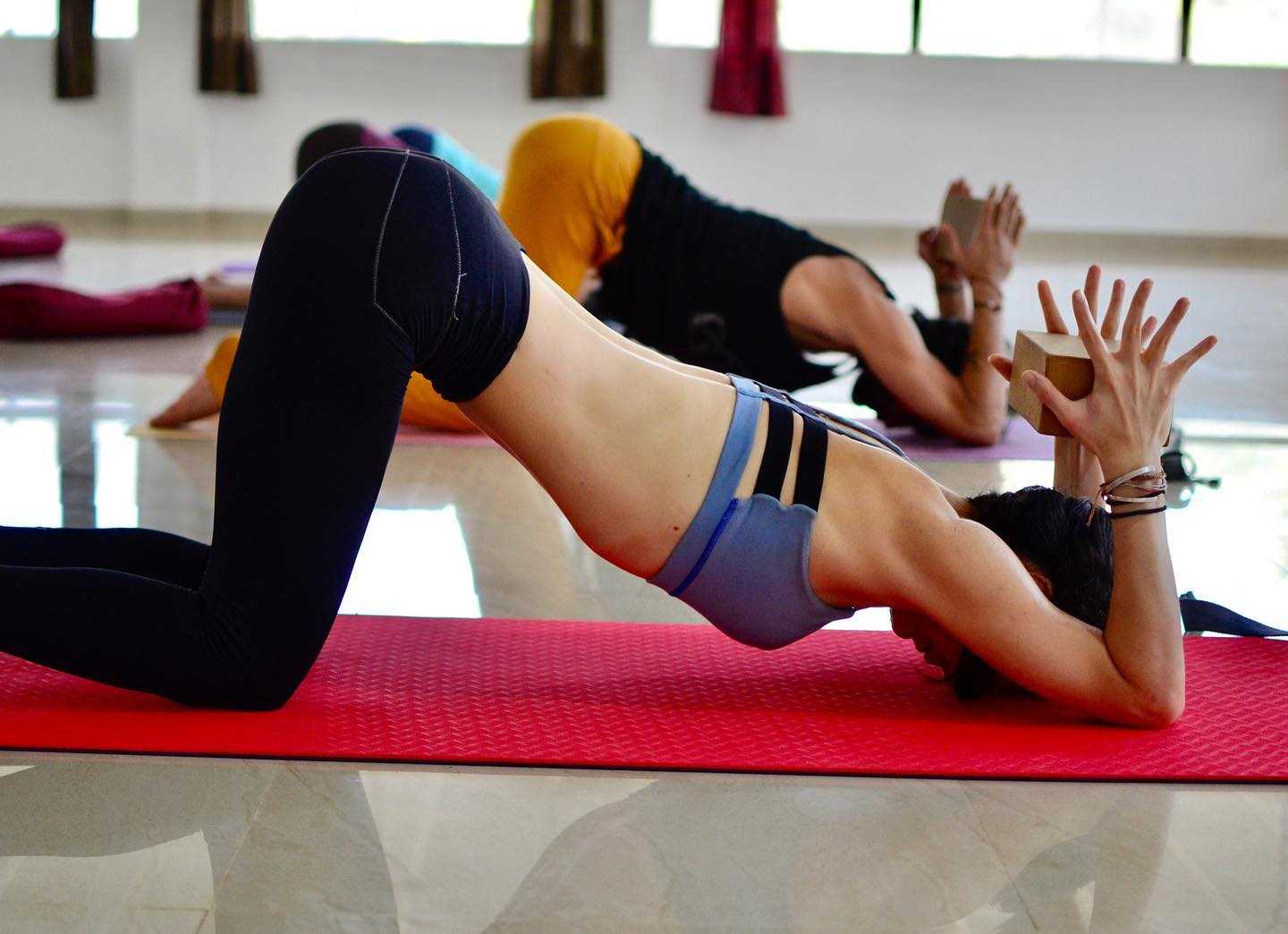
Variations of Makarasana
Makarasana can be modified or adapted to suit different needs and levels of practice. Here are a few variations of the pose:
1. Supported Makarasana: For individuals with limited flexibility or those recovering from injury, a bolster or folded blanket can be placed under the chest for additional support. This variation helps in maintaining the gentle arch in the lower back without straining the muscles.
2. Makarasana with Leg Stretch: To enhance the stretch in the lower back and hamstrings, one leg can be stretched straight back while the other remains in the traditional Makarasana position. This variation provides a deeper stretch and can help in releasing tension in the legs and lower back.
3. Dynamic Makarasana: In this variation, the practitioner alternates lifting one leg at a time while holding the traditional Makarasana pose. This dynamic movement helps in strengthening the lower back and glutes while maintaining the relaxing benefits of the pose.
Contraindications and Precautions
While Makarasana is generally safe for most practitioners, there are a few contraindications and precautions to keep in mind:
1. Lower Back Injuries: Individuals with severe lower back injuries or conditions should avoid Makarasana or perform it under the guidance of a qualified yoga instructor.
2. Pregnancy: Pregnant women should avoid lying on their stomachs, especially in the later stages of pregnancy. Alternative restorative poses can be practiced instead.
3. Neck and Shoulder Issues: If you have any neck or shoulder issues, be cautious when resting your head on your forearms. Ensure that your neck and shoulders are relaxed and supported.
4. High Blood Pressure: While Makarasana is generally relaxing, individuals with high blood pressure should practice this pose with caution and avoid holding their breath.
Integrating Makarasana into Your Yoga Practice
Makarasana can be integrated into your yoga practice in various ways:
1. As a Restorative Pose: Makarasana can be used as a restorative pose at the end of a yoga session to promote relaxation and help the body recuperate from more intense postures.
2. As a Warm-Up Pose: Practicing Makarasana at the beginning of a session can help in gently warming up the lower back and preparing the body for more challenging poses.
3. As a Standalone Practice: Makarasana can be practiced on its own as a way to relax and unwind after a long day. It can be particularly beneficial before bedtime to promote restful sleep.
4. In Pranayama Practice: Makarasana can be combined with pranayama (breathing exercises) to enhance the benefits of deep breathing and promote mental clarity.
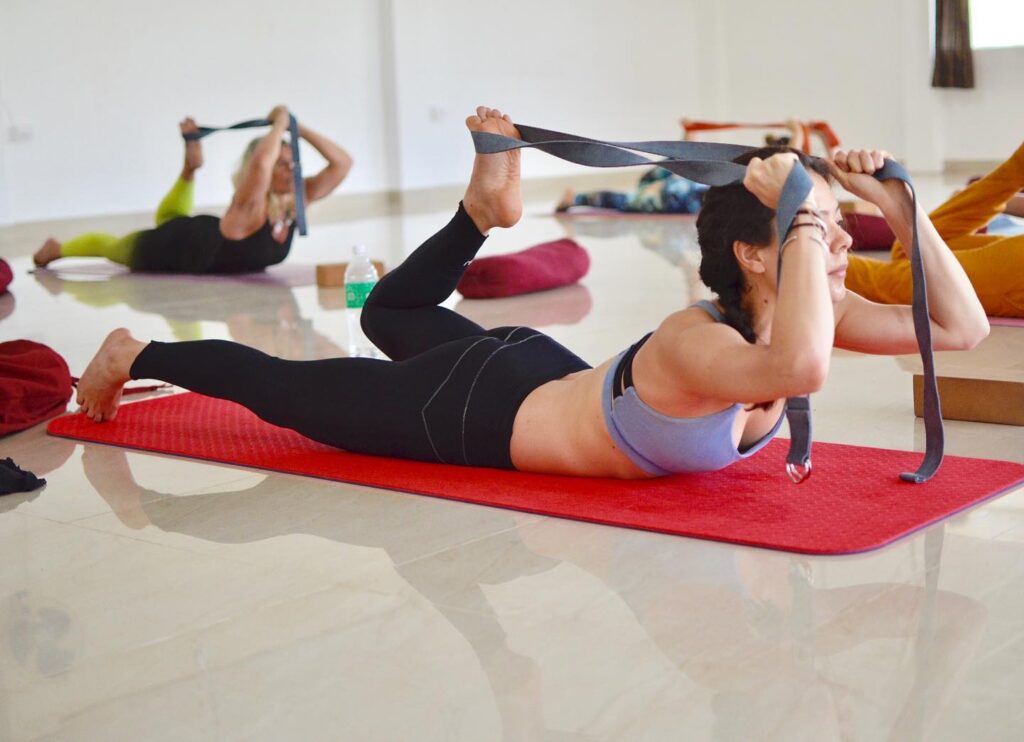
The Role of Makarasana in Modern Yoga
In modern yoga practice, Makarasana plays an essential role in promoting relaxation and balance. In a world where stress and anxiety are prevalent, restorative poses like Makarasana are increasingly important for mental and emotional well-being. This pose offers a moment of stillness and tranquility, allowing practitioners to reconnect with themselves and cultivate a sense of inner peace.
Moreover, Makarasana’s emphasis on proper alignment and relaxation makes it an ideal pose for beginners and advanced practitioners alike. It serves as a reminder that yoga is not just about physical exertion but also about finding harmony within the body and mind.
Makarasana and Therapeutic Yoga
Makarasana is often used in therapeutic yoga to address various physical and mental health conditions. Its ability to alleviate lower back pain, improve posture, and reduce stress makes it a valuable tool in therapeutic settings. Yoga therapists may incorporate Makarasana into personalized yoga sequences for individuals dealing with chronic pain, anxiety, or sleep disorders.
Furthermore, Makarasana can be beneficial for individuals recovering from injuries or surgeries. Its gentle nature allows for safe practice, even for those with limited mobility or flexibility.
Makarasana and Mindfulness
Makarasana provides an excellent opportunity to practice mindfulness. By focusing on the breath and the sensations in the body, practitioners can cultivate a deeper awareness of the present moment. This mindfulness practice can help in reducing stress, improving concentration, and fostering a greater sense of self-awareness.
Incorporating mindfulness into Makarasana can also enhance its emotional benefits. By observing thoughts and emotions without judgment, practitioners can release any negative energy and create space for positive feelings.
Makarasana in Different Yoga Traditions
Makarasana is practiced in various yoga traditions, each with its unique approach and emphasis. In Hatha Yoga, Makarasana is often used as a restorative pose to balance the body and mind after more vigorous practices. In Iyengar Yoga, the pose may be practiced with props to ensure proper alignment and support.
In Restorative Yoga, Makarasana is a staple pose for promoting deep relaxation and rejuvenation. The pose may be held for extended periods, allowing the body to enter a state of deep rest.
Regardless of the tradition, Makarasana remains a powerful pose for relaxation and healing.
Conclusion: Embracing the Power of Makarasana
Makarasana, the Crocodile Pose, is a simple yet profoundly effective yoga posture that offers a wide range of physical, mental, and emotional benefits. Whether you are looking to alleviate lower back pain, reduce stress, improve posture, or simply find a moment of peace, Makarasana provides the tools to achieve these goals.
Incorporating Makarasana into your regular yoga practice can lead to greater overall well-being and a deeper connection to yourself. By embracing the power of this restorative pose, you can cultivate a sense of calm, balance, and harmony in your life.
So, the next time you find yourself in need of relaxation or seeking to release tension, take a few moments to practice Makarasana. Allow yourself to rest like a crocodile on the water’s surface, and experience the transformative benefits of this beautiful yoga pose.
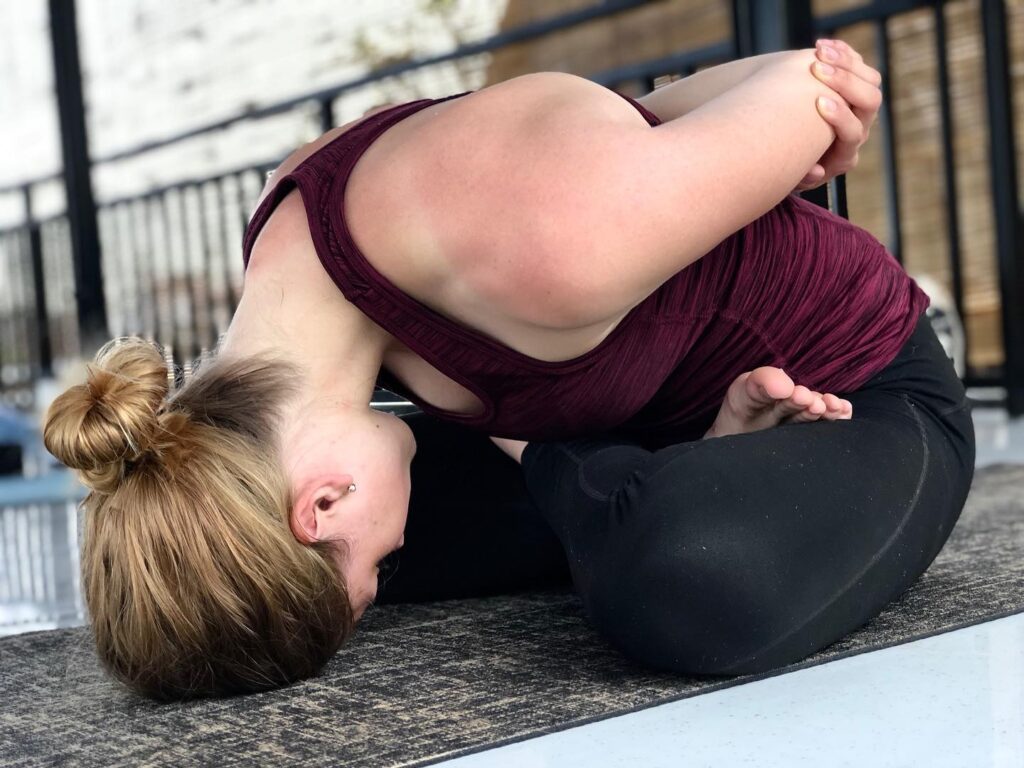
Makarasana (Crocodile Pose) FAQ
1. What is Makarasana?
Makarasana, also known as the Crocodile Pose, is a restorative yoga pose where the practitioner lies on their stomach with their head resting on their crossed forearms, and legs slightly apart. It promotes deep relaxation, especially in the lower back and shoulders, and is often used at the end of a yoga session.
2. What are the benefits of practicing Makarasana?
Makarasana offers several benefits, including:
- Relief from lower back pain: The gentle arch in the spine alleviates tension.
- Improved posture: Encourages proper spinal alignment.
- Stress reduction: Promotes relaxation by activating the parasympathetic nervous system.
- Better breathing: Expands the chest, enhancing lung capacity and oxygen intake.
- Mental clarity: Calms the mind, improving focus and concentration.
3. How do I correctly perform Makarasana?
To perform Makarasana:
- Lie flat on your stomach with legs slightly apart.
- Cross your arms in front of you and rest your forehead on your forearms.
- Allow your lower back to form a gentle arch by slightly lifting your chest off the mat.
- Close your eyes and breathe deeply, staying in the pose for 5-10 minutes.
- To release, gently lift your head and return to a neutral position.
4. Can beginners practice Makarasana?
Yes, Makarasana is suitable for beginners due to its simple and restorative nature. It does not require any advanced flexibility or strength, making it accessible to everyone.
5. Are there any common mistakes to avoid in Makarasana?
Common mistakes to avoid include:
- Overarching the lower back: Maintain a gentle, comfortable arch.
- Tension in the neck and shoulders: Ensure these areas are relaxed.
- Incorrect leg positioning: Keep heels pointing inwards and toes pointing outwards.
- Shallow breathing: Focus on deep, diaphragmatic breathing.
6. What variations of Makarasana can I try?
Some variations include:
- Supported Makarasana: Place a bolster under the chest for additional support.
- Makarasana with Leg Stretch: Stretch one leg back while the other remains in position.
- Dynamic Makarasana: Alternate lifting each leg while holding the pose to strengthen the lower back.
7. Who should avoid practicing Makarasana?
Individuals with the following conditions should practice caution or avoid Makarasana:
- Severe lower back injuries
- Pregnancy, especially in the later stages
- Neck and shoulder issues
- High blood pressure (consult a yoga instructor or doctor)
8. How long should I hold Makarasana?
Makarasana can be held for 5-10 minutes, or longer if comfortable. The duration depends on your level of comfort and the specific purpose of your practice, such as relaxation or therapeutic benefits.
9. Can Makarasana help with sleep issues?
Yes, Makarasana promotes deep relaxation and can help in reducing stress and anxiety, which are common causes of sleep disturbances. Practicing this pose before bedtime can aid in improving sleep quality.
10. How does Makarasana compare to Savasana (Corpse Pose)?
While both Makarasana and Savasana are restorative poses aimed at promoting relaxation, they differ in positioning. Savasana is performed lying on the back, while Makarasana is done lying on the stomach. Makarasana is particularly beneficial for relieving lower back tension, whereas Savasana is often used for full-body relaxation.
11. Can Makarasana be included in a daily yoga routine?
Absolutely! Makarasana is a versatile pose that can be incorporated into a daily yoga routine, either as a warm-up, a restorative pose, or as part of a cool-down sequence to promote relaxation and ease tension.
12. Is Makarasana beneficial for people with respiratory issues?
Yes, Makarasana can be beneficial for individuals with respiratory issues as it encourages deep, diaphragmatic breathing and helps in expanding the chest, thereby improving lung capacity and overall respiratory function.
13. Can I practice Makarasana if I have tight shoulders?
Yes, Makarasana can help in releasing tension in the shoulders. Ensure your shoulders are relaxed, and if necessary, use a prop like a rolled blanket under your chest to reduce strain and promote relaxation.
14. Is it normal to feel discomfort in Makarasana?
While Makarasana is a gentle pose, discomfort may arise if the lower back is overarched or if there is tension in the neck and shoulders. Adjust your position, use props for support, and focus on deep breathing to alleviate discomfort.
15. How can I enhance the relaxation benefits of Makarasana?
To enhance relaxation:
- Practice deep, mindful breathing.
- Use calming essential oils like lavender.
- Combine Makarasana with a short meditation.
- Practice in a quiet, comfortable space with dim lighting.

